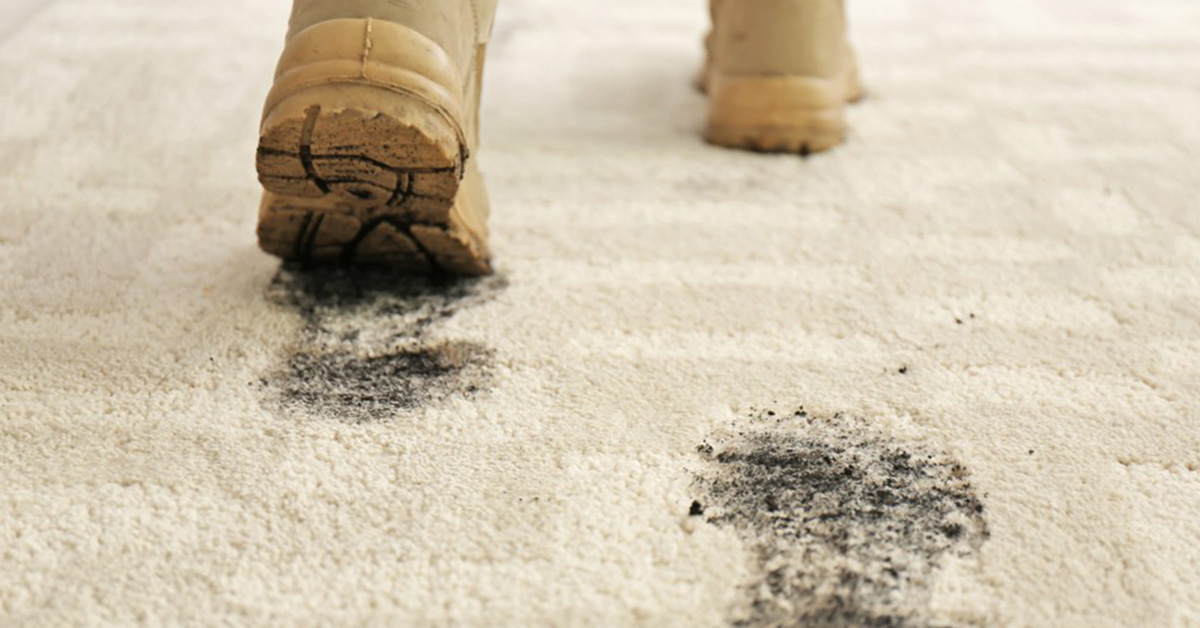Long-term care facilities must create clean and welcoming indoor environments not only for their occupants, but also for their staff members and the friends and family members of residents. A clean facility sends the message that the facility prioritizes the health and well-being of those who live and work in the building. And often, the first thing that people notice upon entering a facility or room is the flooring. Many long-term care facilities install carpet, which can become dirty and stained over time.
Properly identifying different carpet stain types is crucial, as it determines which type of chemistry will be used on the spot. Quickly implementing the right solution increases stain removal success rates and allows facilities to maintain clean carpet for years to come.
The Right Combination
The best way to ensure your carpet care processes are sound is to employ the proper machines, chemistry and tools to tackle stains and keep carpet looking clean.
- Low-moisture encapsulation carpet care machines deploy far less liquid into carpet fibers than other cleaning methods, allowing cleaned areas to dry within about 30 minutes. Use a machine with counter-rotating brushes that effectively lift the carpet pile and agitate the solution into the fibers to remove embedded soils and surface stains. Ideally, the machine will also have an integrated collection hopper for debris pick-up, landing gear that protects the brushes when the machine is turned off, a machine-mounted solution tank, and easy controls to minimize training.
- Quality carpet care chemistry helps facilities safely remove built-up dirt and stains without negatively impacting carpet appearance and color. Consider a range that includes daily spotting, interim maintenance and deep cleaning solutions to address all carpet cleaning needs. High-quality products will help cleaning staff remove soil and dirt with one cleaning and will not leave lingering residues on carpet.
- Spotting tools are essential handheld helpers that are used to quickly agitate carpet. Look for a tool with wheels and an adjustable handle that offers two bristle settings – firm for maximum agitation and soft for light agitation. Additionally, keep a smaller tool on hand that has chamfered openings to easily lift stains through mild agitation.
Stain Identification 101
There are many different carpet stain types that can plague flooring in facilities, which can make identifying a stain all the more difficult. However, the following best practices on how to identify carpet stains can help housekeeping teams quickly recognize and treat various carpet spots so that they effectively treat them with the appropriate product.
- Ask! – The simplest way to identify a carpet stain is to ask those who may have been witness to the incident. A resident may be able to confirm that they spilled pasta sauce in the dining hall or that they became sick in their room and were unable to reach the restroom. If nobody can help, there are other strategies you can employ.
- Assess the stain’s location – You may be able to deduce a stain’s origin just by considering where the spot is located. Food and beverage stains are likely to occur in dining areas while mud and grass stains are more prevalent near entrances and transitions from hard to soft flooring.
- Use visual cues – If you are still unsure of the stain’s composition, take a closer look at its visual characteristics. What color is it? Is it dull or shiny? Is it flat or multi-dimensional? Does it appear to be sticky? Blood stains typically appear brown in color as they dry, candle wax appears as a hardened pool and vomit usually has excess material that needs removing.
- Rely on olfactory senses – While unpleasant, sometimes smelling a stain can offer necessary clues. For example, urine and vomit stains are likely to have strong odors. Red wine has a sour smell and even many food and grease odors have their own distinct scent.
- Pair the stain to the chemistry – Now that you’ve identified the cause of the stain, you’ll want to match the stain type to the chemistry designed to remove it. Access Whittaker’s detailed chemistry poster here for step-by-step instructions to follow for a variety of stains.
Don’t Let Stains Stay
Everything from protein to coffee and tea to lipstick to food stains can occur in long-term care facilities. Quickly addressing these carpet stains can keep them from permanently setting or becoming extremely difficult to remove. With the proper carpet encapsulation machine, chemistry and tools, facilities set themselves up for stain removal success. Additionally, by adhering to the above best practices, housekeeping staff can more easily identify the type of stain with which they are dealing and use the right chemistry during the cleaning process.
Looking to conduct carpet care the Whittaker Way? Our Smart Care® TWIN and TRIO machines and CRYSTAL® Chemistry are the perfect combination for the carpet care needs of long-term care facilities.


